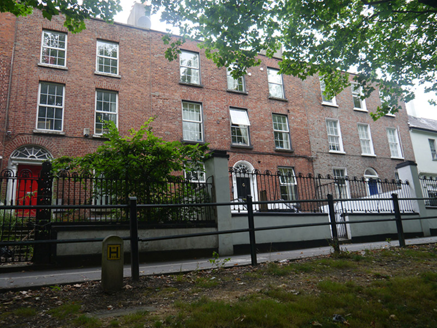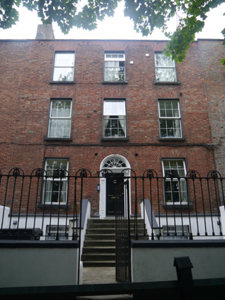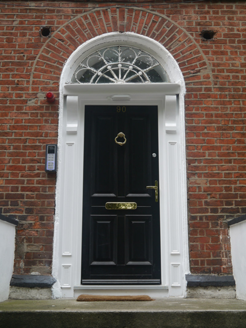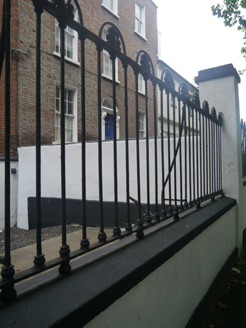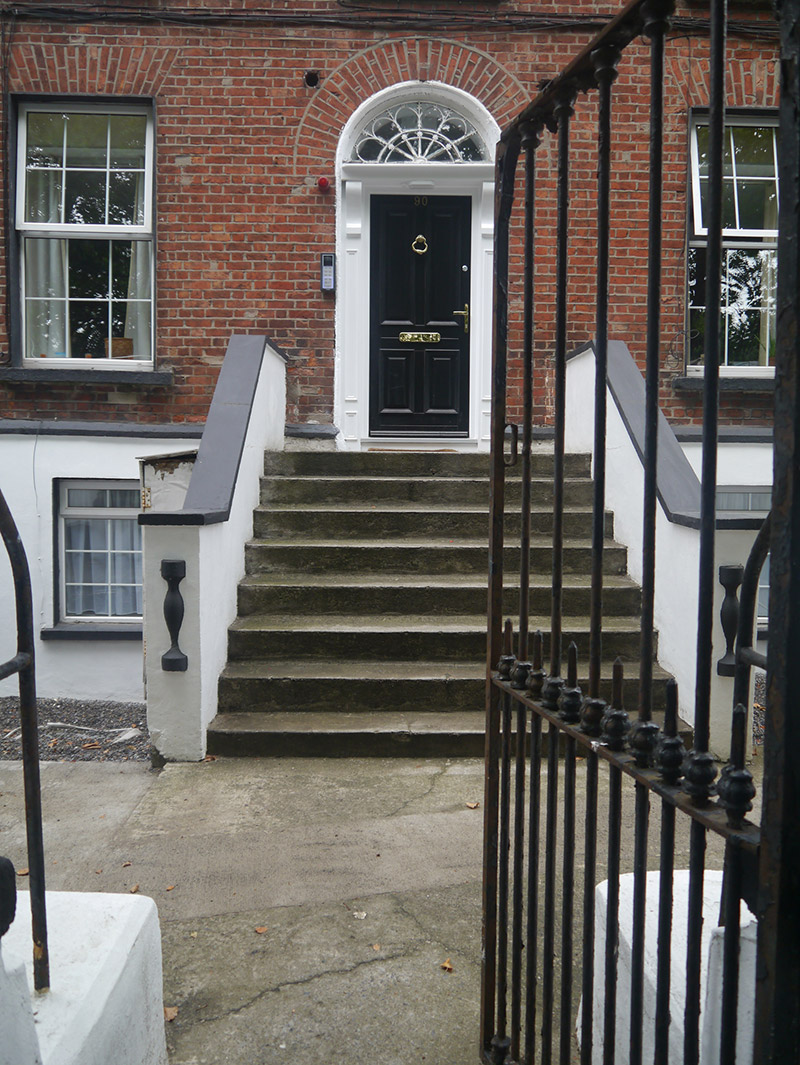Survey Data
Reg No
50130177
Rating
Regional
Categories of Special Interest
Architectural, Artistic
Original Use
House
In Use As
Apartment/flat (converted)
Date
1780 - 1800
Coordinates
316077, 236374
Date Recorded
23/07/2018
Date Updated
--/--/--
Description
Mid-terraced three-bay three-storey house over raised basement, built c. 1790 as centre of row of three, having two-storey return to rear (west). Now in use as apartments. M-profile hipped slate roof with clay ridge and hip tiles, concealed by brick parapet with stone coping; four rendered masonry chimneystacks to party walls with yellow clay pots. Red brick walling, laid in Flemish bond, over painted stone plinth course, with painted smooth render to basement. Square-headed window openings with brick jack-arches, patent reveals, painted stone sills and replacement uPVC windows. Round-headed doorway with brick voussoirs, stucco reveals, carved timber doorcase comprising panelled pilasters, scrolled brackets supporting canopy with original iron petal fanlight, and replacement timber bolection-moulded four-panel door accessed by flight of eight stone steps flanked by rendered masonry walls with painted stone copings. Former garden to front now concreted over, bounded to street by wrought-iron railings with hoops and palmette finials on painted stone plinth wall, having central full-height wrought-iron pedestrian gate. Enclosed garden to rear. Located on tree-lined section of Drumcondra Road Lower.
Appraisal
An elegant house in the middle of a short terrace of late eighteenth-century houses on the west side of Drumcondra Road, set back behind a tree-lined buffer that separates them from the busy main thoroughfare, flanked by later attached buildings at either end. The terrace is highly representative of the style and proportions of Georgian residential building in Dublin, although it is distinguished from the generally late nineteenth-century urban grain of the Drumcondra suburbs. The decorative ironwork enclosing the front garden form a particularly attractive feature of this group of buildings. They make a strong contribution to the architectural quality and variety of the Drumcondra area.
